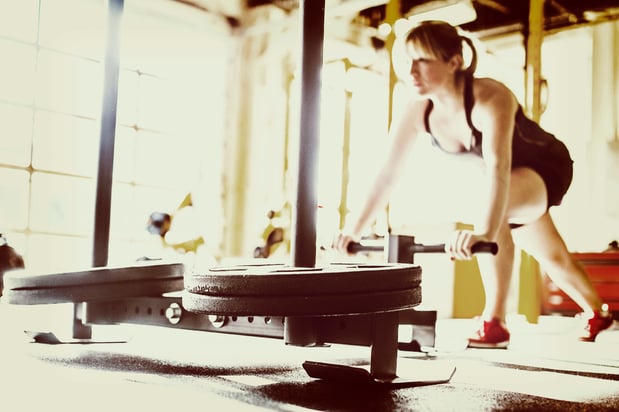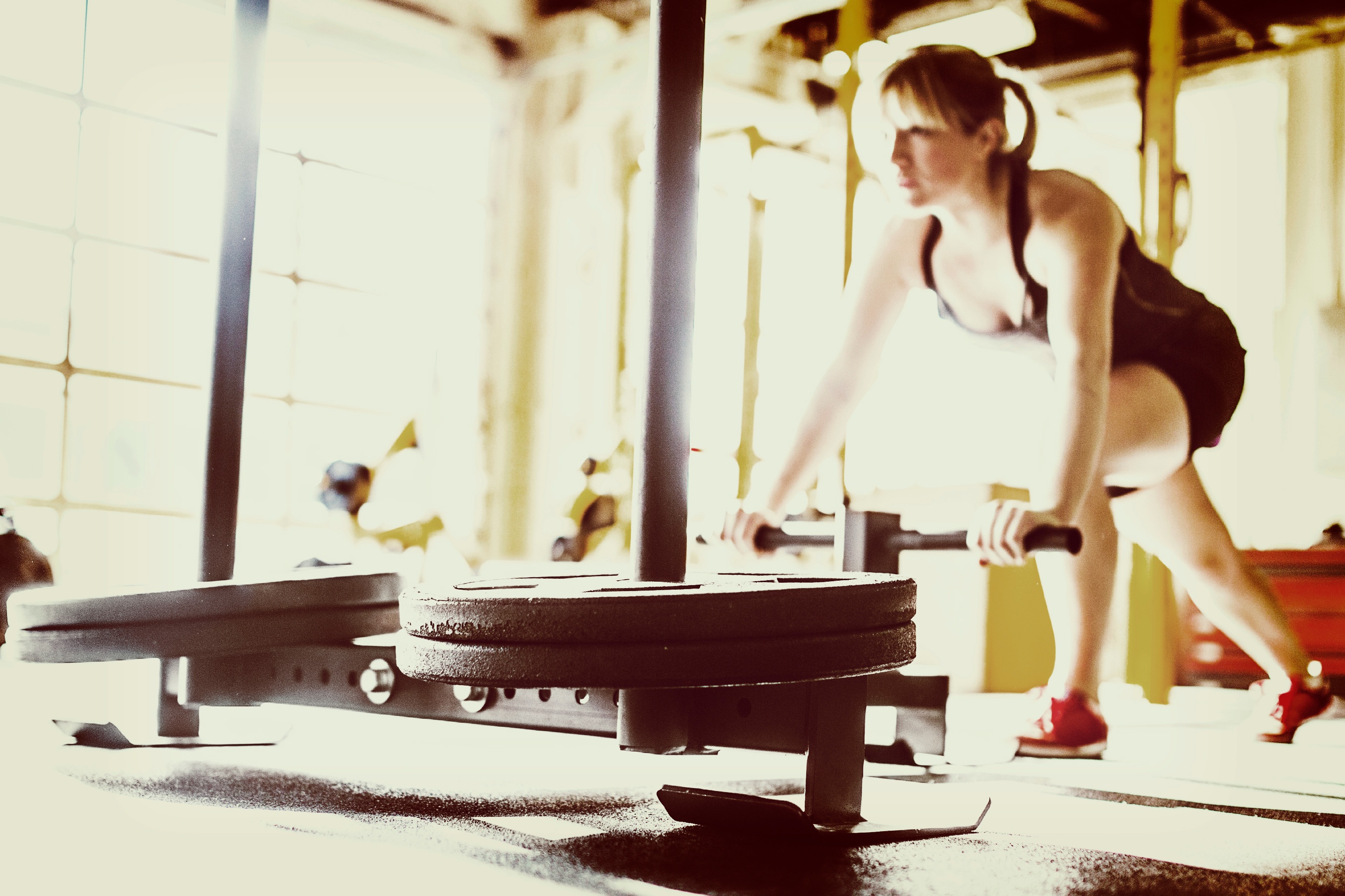Hormonal and Neural Adaptations to Strength Training

Athletes who understand the purpose and effects of their training regimen tend to perform better because they have the context and a sense of direction for their desired development. In light of this, we found it useful to explore relevant physiological changes that occur post-resistance and strength training so that athletes and coaches can be more cognizant of how to train smart. Beginning with the hormonal and neural shifts that occur during strength training, and why all athletes, regardless of position, distance, or event, can benefit from a smart strength program.
Hormones
Hormones play a significant role in muscle hypertrophy and strength development. They broadly regulate growth, development, and reproduction, as well as increase the body’s capacity to handle physical stress¹. Hormones ultimately create these changes by altering protein synthesis. Hormone production during exercise can vary; factors such as overtraining, nutrition, and sleep can affect your body’s ability to release a healthy dose. Anabolic hormones produced in the body like testosterone and growth hormone contribute to protein synthesis in the muscle². Anabolic effects include accelerated growth of muscle, bone, and red blood cells, and increased neural conduction, all of which help athletes build strength and develop athleticism.
All Athletes Need Resistance Training
A smart and personalized strength program will ensure athletes execute movements with sufficient resistance and complexity to elicit a physiological response. The days of high rep and lightweight exercises are gone, as the pioneer of functional sports movement, Vern Gambetta, fondly refers to as “garbage strength” ³. Distance athletes need not fear of “bulking up” while trying to build strength, as this is actually hard to do given the genetics of a distance athlete (it’s hard to bulk up even for the athletes who try to do so with high protein and creatine intake). Athletes should develop the same general adaptations as that of a sprint athlete profile, that extra bit of force production, greater speed, and higher efficiency applies not only to sprinting but also to stop-and-go and endurance endeavors. Not all athletes will use the same resistance or conduct the same exercises, but the general benefits of this training will be similar. To understand this, we can explore how the body adapts to training and the kind of movements athletes should execute.
Hormonal and Neural Adaptations Under Resistance
Resistance and strength training creates acute hormonal and neural adaptations. The hormonal adaptation is the release of anabolic hormones such as testosterone and growth hormone that are involved in muscle hypertrophy, increase in muscle size. The “neural” adaptation refers to the brain’s ability to recruit muscles for a movement, especially when the body is slightly fatigued. More information on why muscule fatigue occures can be found here. By practicing an exercise under resistance, your brain figures out how to the ways to signal the correct muscles to achieve the desired movement. More complex movements involving the whole body and demand greater muscle recruitment to complete the exercise. A deep squat will yield greater gain for an athlete than a bicep curl because the squat requires hamstrings, hips, glutes, quads, core, and overall more muscles to complete the movement. Moreover, if a deep squat is done when the body is slightly fatigued the movement will teach the brain to recruit the muscles needed to complete the movement, when it normally doesn’t. This adaptation is useful at the end of a race, game or event, when an athlete's strength normally begins to wane. This becomes a cycle: resistance train, teach the brain to fire muscles even under fatigue, release hormones that lead to protein synthesis, build strength, adapt to the resistance, etc.
Resistance Train the Smart Way
Sufficient Load- As much as overtraining is a definite red flag for athletes, while underdoing it in a strength program is also a red flag. Many athletes go through their strength movements without a sense of urgency or cadence, or they use resistance that is too light in fear of bulking up. You will have a greater hormonal response and build more new motor pathways by executing your training around 60-80% of 1RM (RM is the max resistance you can do given one repetition)³. More qualitatively, you should be getting through 6-8 reps of a given exercise where the last couple reps should be challenging, yet the athlete is not going to fail to complete the set. As always, technique takes priority over increasing resistance.
Sufficient Velocity of Movement- During each rep, athletes need to move through the exercise with sufficient velocity. Athletes are developing a highly complex neural pathway (brain-body connection), so to reap any benefits that can apply to performance athletes need to move with the appropriate speed. Athletes may need to go down in resistance to ensure they can move with enough velocity to complete the exercise.
Sufficient Complexity-Whole body exercises are simply more functional. When the entire body is involved the exercises more closely approximate the neuromuscular demand of movements in sports because they require coordination among several muscle groups to achieve a movement. Basics like squats, lunges, and pushups demand complexity and also teach the brain to signal all the muscles necessary to complete the action, whereas isolated movements only fire one muscle per group at a time. Athletes can focus on full body movements to develop strength in the general strength phase of their season, and then simply maintain the motor pathways with fewer reps or rounds later on in the season.
Recap
Hormonal and neural adaptations occur during resistance training. Ensure your athletes use moderate to high resistance in whole-body, functional exercises, and move deliberately with every rep!
To discover more strength training tips, check out our strength & conditioning page on our BridgeBlog, and get one of our sport-specific training programs to maximize your training potential!
References:
1. http://www.unm.edu/~lkravitz/Article%20folder/growthhormone.html
2. Robergs, R. A. and Roberts, S. O. (1997). Exercise physiology: Exercise, performance, and clinical applications. Mosby, St. Louis.
3. Episode 3: Strength training- Myths, misconceptions, and application for distance runners https://itunes.apple.com/us/podcast/magness-marcus-on-coaching/id961516002
About the Author

At Bridge, we are all athletes and coaches first. As athletes, our team has experienced everything from riding the pine on JV, to winning NCAA championships, to competing in the Olympic Games. As coaches, we have helped countless athletes reach their full potential, winning everything from age group section championships to Olympic Gold Medals.
Related Posts

The Best Bench Press Variation You’re...
This post is part of our Coaches Corner series with Taylor Rimmer. Taylor is NSCA-CPT, StrongFirst...

Does Powerlifting Harm Heart Health?
A recent study has discovered that a 12-week supervised strength training program (SSTP) may result...
-1.png)
Barefoot Running: Is It For You? |...
Run Free: Consider Less Cushion
Updated October 2020:
With more athletes looking for ways to...


